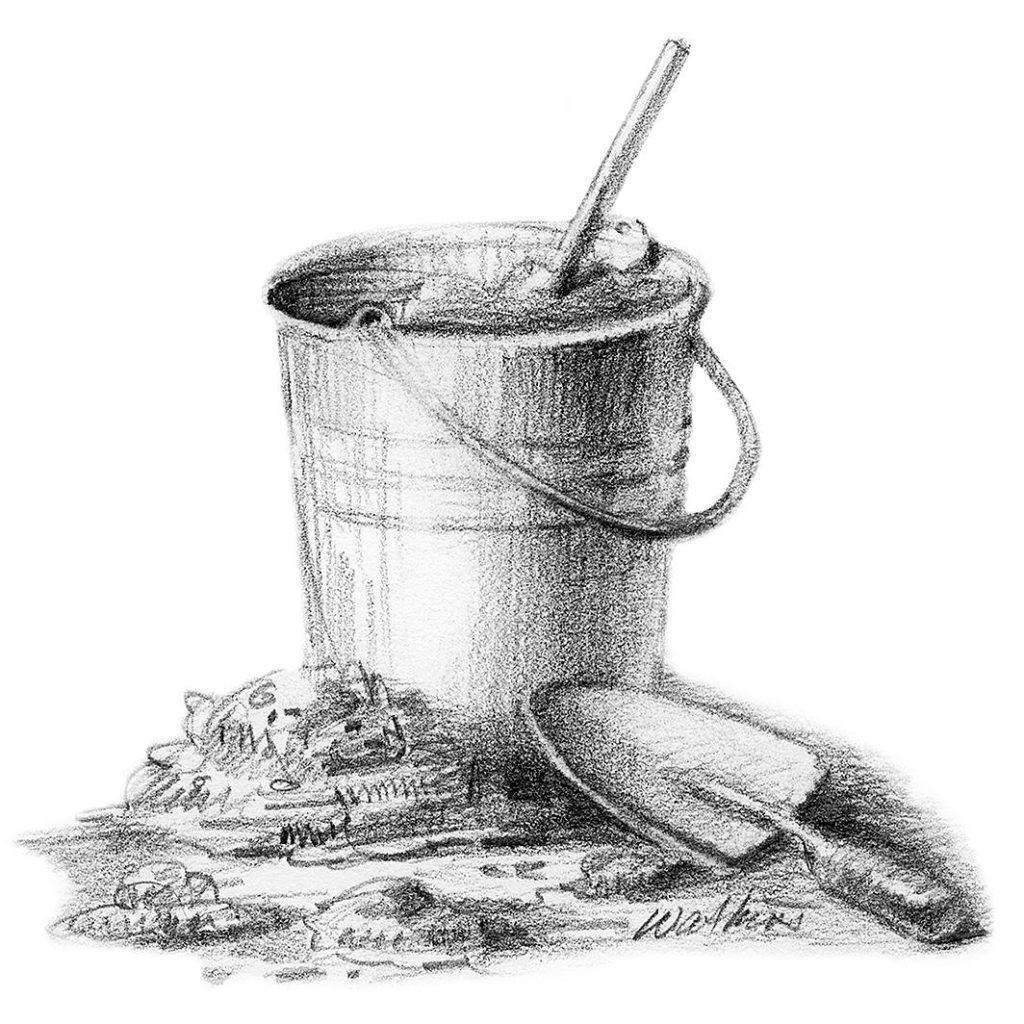April, Happy as a Pig in Mud
By Leslie Watkins
Mud season is that slippery, slimy time of year when winter melt starts from the surface and works its way down to produce sticky wet soil. Deep ruts in dirt roads can make them impassable and hikers are advised to stay on the trails, not the edges, to prevent further erosion. Not only does mud make a mess of your boots, your car, your porch, your dogs, it can track into your house—unless you have a mudroom. In New England entire rooms are dedicated to controlling the flow of mud and some are even equipped with washers and driers. Google “mudroom” and you will find hundreds of useful items dedicated just for this room alone.

Gardeners anxious to get outside and start working the soil would do better to wait for the soil to dry out a bit. The natural actions of frost and thaw help to rearrange soil particles into complex aggregates. Aggregates are a bond of clay, humus and even mucilage from worms and snails. Good soil structure contains spaces that air and water move through, providing a healthy environment for plant roots, invertebrates, fungi and microbial activity. When we walk on soil that is too wet, it becomes compacted and cannot support the micro-system. By waiting a little longer to clean up the debris from your garden, you also allow beneficial insects and amphibians to emerge from hibernation.
Mud has benefits, too. Mud contains minerals like sodium, magnesium and potassium which can be soothing to irritations. Mud baths made from volcanic ash and mineral salts are used as anti-inflammatory, detoxifying and relaxing therapies, especially useful for people with osteoarthritis and for pain management. It’s used on skin to absorb impurities, hydrate, exfoliate and for protection from insects. Some people claim that, applied to insect stings, mud helps to reduce pain and swelling. People aren’t the only animals happy in mud. Pigs, rhinos, hippos, bison, red deer and elephants all enjoy a nice mud bath. Captive animals deprived of adequate wallowing have quickly developed broken and inflamed skins, infections, eye problems, inflamed nails, hair loss and have eventually died.
Mycobacterium vaccae, a bacterium that lives in soil, stimulates the release of serotonin in the brain. It may be useful as an anti-depressant, anti-stress and even improve cognition and lower some risk factors for dementia and Alzheimer’s disease. It’s being used in a study as a possible treatment for veterans diagnosed with PTSD. You can’t get M. vaccae from a pill; we inhale it from disturbed soil and from eating fruits and vegetables directly off the plant. Studies find that kids who play with dirt have stronger immune systems. Mud pies anyone?
Earth-made homes have stood the test of time. When well-made they are strong, resistant to earthquakes, fire-proof and anti-allergenic. Mud bricks have been used to build ovens, cooking pits and eco-friendly structures since the beginning of time. Made from mud, sand, clay, water straw or rice husks, they’re durable, mold-resistant, naturally insulating, waste-free and of course dirt cheap.
And mud is just plain fun, wrote Polly Chase Boyden:“Mud is very nice to feel/All squishy-squash between the toes!/I’d rather wade in wiggly mud/Than smell a yellow rose.”
April Chores
Prune grapes to four shoots.
Prune out old raspberry canes.
Move dried leaves away from shoots.
Take down bird feeders.
Clean up spilled seed.
Put up bird houses.
Direct sow peas, spinach, beets and radishes.
Fertilize fall-planted garlic.
Turn compost piles.
Check yourself for ticks.
